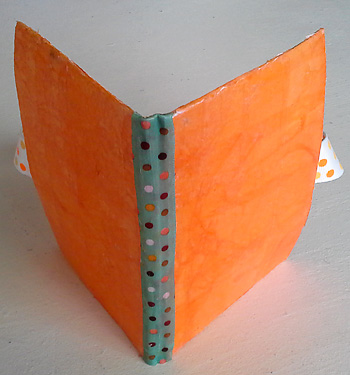“Be My Valentine”
What was planned as a Valentine-making workshop, turned into a Valentine bookmaking experience instead…with the creative participants learning how to fold an accordion book with pockets, and adorning, embellishing and enhancing it with all manner of sumptuous materials!
Participants glued together prepared strips of high quality drawing paper, which had the pocket folds set up for them. The pocket folds were folded, then unfolded, so that the participants did not have to measure them out. Each paper strip was also folded in half, and organized in sets of two.
After choosing their strips, gluing them together, then re-folding the pocket folds and then the center fold, the participants went on to fold the rest of the accordion structure. They added the covers which were cut to be wider then the width of the accordion sections, and folded the edge of the covers into the book, creating flaps or vertical pockets, or trimmed them off.
Then the real fun began. Decoration! Adornment! Embellishment! Ribbon, lace, stickers, washi and fabric tapes were used to create design, text and image.
Participants employed all of the materials in fresh and imaginative ways, combining, layering and playing with them to create complex, whimsical and elegant Valentines that became a delicious feast for the eye, while the pockets offered a place for secrets, and possibly poetry.
Glittery stickers, resembling crunchy sugary treats were a hit, transforming the books into sparkling sculptural reliefs,
personalizing their pieces.
Participants used tapes to create patterned borders,
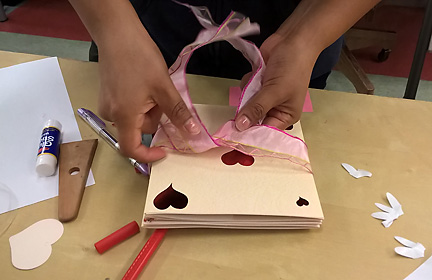
ribbons to hold their books closed,
and ruffled laces to add that “je ne sais quoi” and finishing touch to their creations.
And of course, there are a million ways to say, “I love You!”
A personalized handmade work of Valentine book art would do just that!
Here’s to Amore!
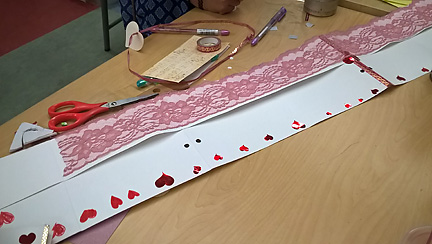
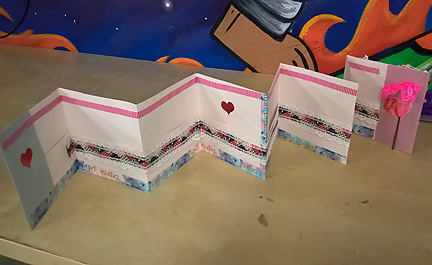
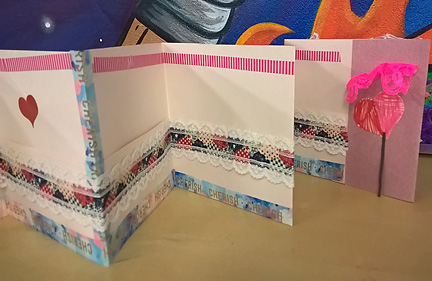

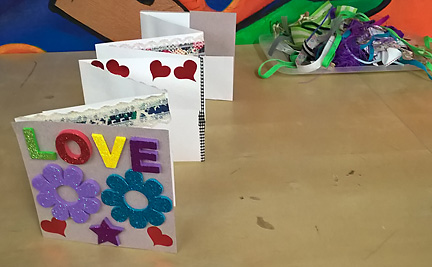

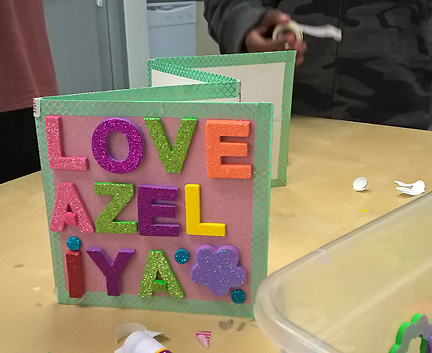

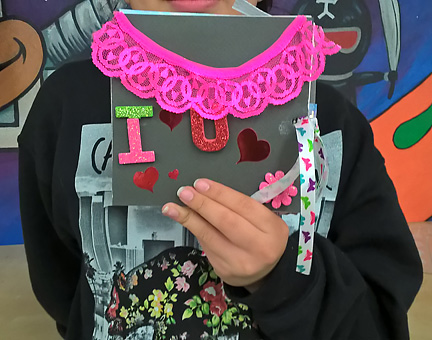






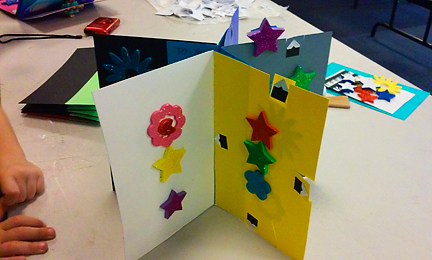










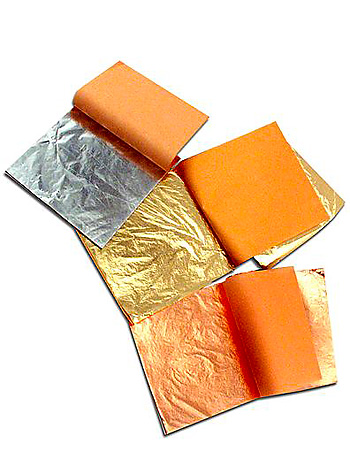









 The polka-dotted ribbon adds an element of pattern and lightness and creates a striped effect when laid down next to the brown felt.
The polka-dotted ribbon adds an element of pattern and lightness and creates a striped effect when laid down next to the brown felt.








